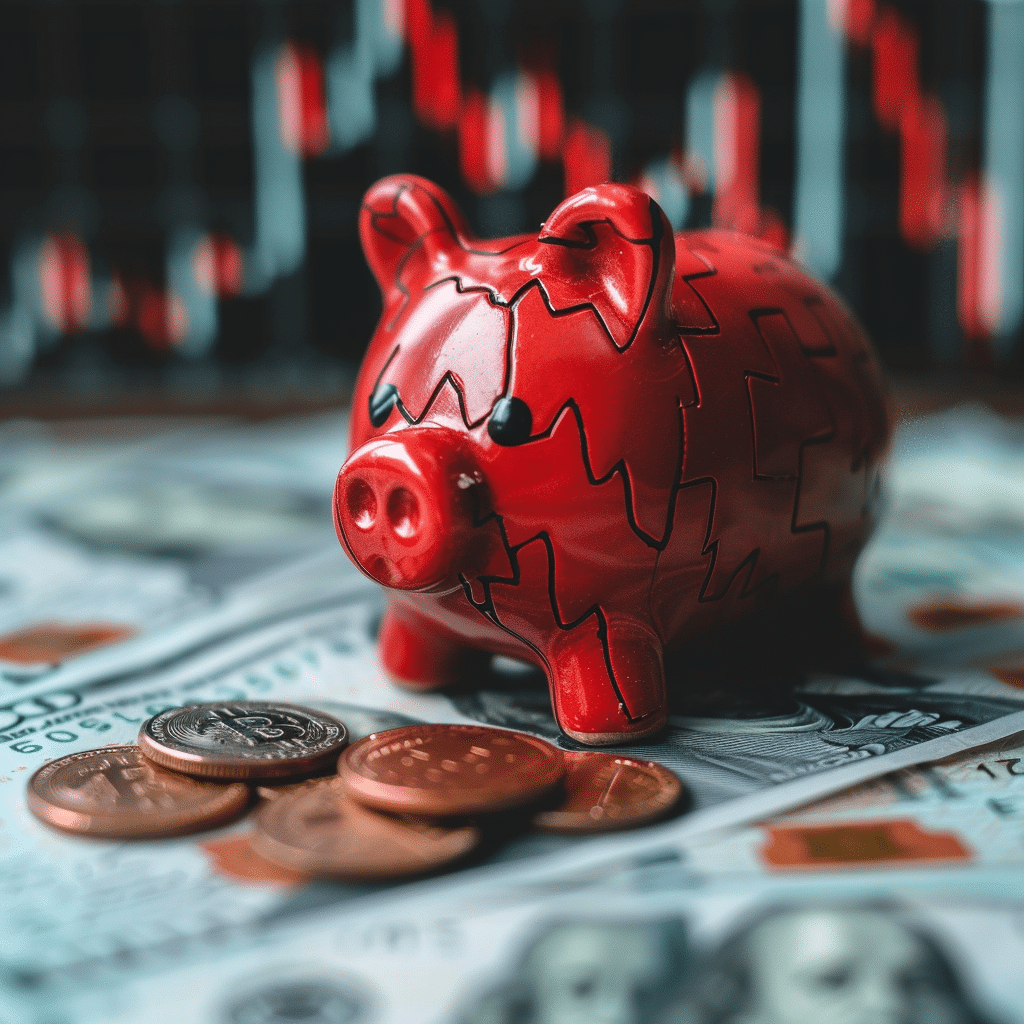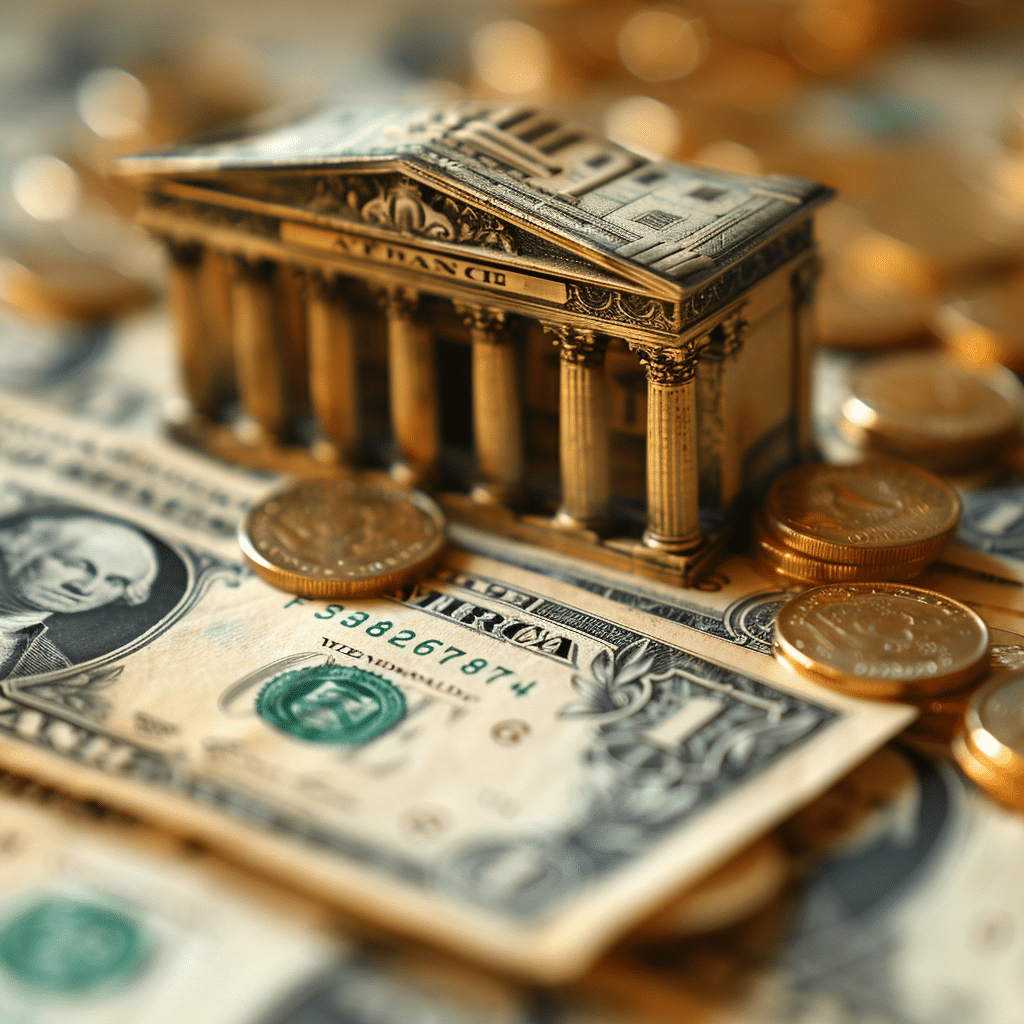As the financial tide ebbs and flows, one key question asked by consumers and investors alike is “when will interest rates go back down?” This fundamental query reverberates through the housing market, lines the wallets of prospective homebuyers, and stirs discussions at financial institutions. Let’s dive deep into the factors that could signal a decrease and prepare for the waves of change.

Predicting the Dip: When Will Interest Rates Go Back Down?
Historical Trends and Current Economic Indicators
Interest rates are a bit like the weather – constantly changing and affecting everything around us, while somehow still catching us unprepared. To better understand where we might be headed, a glance at the rearview mirror can be telling. The economic landscape over the past half-century has seen its fair share of ups and downs, with interest rates rising like a phoenix in times of booming economies and falling like an autumn leaf as economic winter approaches.
Examining inflation, employment, and GDP movements reveals patterns. Currently, fluctuating inflation rates and stable unemployment figures paint a partial picture, suggesting there might be room for rates to soften, but it’s not a done deal yet. Financial soothsayers are weighing in, with some saying we should buckle up for a bumpy ride, while others believe there’s a smooth road ahead.
The Federal Reserve’s Role in Interest Rates
When it comes to the crux of interest rate fluctuations, the Federal Reserve holds the steering wheel. Their sole job? To strike a balance between maximum employment and stable prices. The Reserve’s 2023 policy changes sent ripples across the pond, significantly influencing the cost of borrowing. Delving into their recent pronouncements hints that they might ease the reins should inflation cool off, aligning with their long-game goals.
Global Economic Influences on US Interest Rates
The global economy is more interconnected than ever–what happens across the Atlantic or Pacific can cause waves in the U.S. financial pool. For instance, policy shifts by the European Central Bank or market shifts in Asia can pull the strings of our domestic rates. Last year’s international events echoed in the chambers of U.S. monetary policy planners, and with the current trends, it wouldn’t be far-fetched to expect a ripple effect leading to a potential decrease.
The Housing Market’s Reaction to Fluctuating Interest Rates
Like an intricate dance, the housing market responds to the rhythm of interest rates. In the past year, delicate steps have been taken: mortgage applications varied, and refinancing became the talk of the town. Real estate know-it-alls suggest keeping an eye on the housing pulse could give us a heads-up on when rates might take a dip.
Political Factors That Could Influence Interest Rates
Now, we can’t overlook the political arena – it’s a stage where economic dramas often unfold. Policy decisions and legislative actions in Congress have the power to push the economy one way or another. With the current political landscape, any upcoming elections could take us on a roller coaster ride, potentially affecting when rates will simmer down.
Technological Advances and Economic Efficiency
Today’s world is moving at the speed of technology—a breakthrough today could mean a more efficient economy tomorrow. Strides in tech could spell good news for interest rates, as increased productivity may prompt a decrease in borrowing costs. Think of it as the economic version of stepping on the gas and easing on the brakes simultaneously.
Consumer Behavior and Its Impact on the Economy
Don’t underestimate the power of the people. Our own spending habits, collective debt, and savings rates play into the broader economic script. A confident consumer is like a green light for economic growth, which could signal an eventual cool-down of interest rates.
Sector-Specific Interest Rate Analysis
Peering into different sectors, we see that interest rates cast a long shadow on industries ranging from tech to services. Should Silicon Valley experience a “eureka!” moment or if manufacturing hits a sweet spot, we might anticipate a collective sigh of relief in the form of lowered interest rates.

Anticipating a Change: Expert Predictions for Interest Rates
Gathering wisdom from an array of financial wizards, the consensus is split. Some hold their chips, betting on a sooner-than-later decrease, while others brace for a more gradual change. It’s truly a mix of forecasts, but what’s crystal clear is that nobody has a crystal ball.
| Indicator | Current Status (as of latest data prior to Knowledge Cutoff) | Potential Impact on Interest Rates | Note |
| Inflation Rate | [Current Inflation Rate] | Typically, higher inflation leads to higher interest rates to curb economic overheating. Conversely, lower inflation could prompt rates to decline. | Inflation is a key driver for central banks when setting interest rates. |
| Employment Data | [Current Employment Rates] | Lower unemployment can lead to rate hikes to manage economic growth, while higher unemployment can lead to rate cuts to stimulate the economy. | Full employment can cause wage growth, which can influence inflation and hence interest rates. |
| GDP Growth | [Current GDP Growth Rate] | Strong GDP growth may lead to higher rates, while slower growth or a recession could lead to lower rates. | Economic growth is an indicator of the economy’s health and can influence central bank policy. |
| Central Bank Policy | [Current Policy Stance] | Central banks may lower rates in response to economic slowdowns or other challenges to stimulate borrowing and investment. | Changes in policy are often communicated in advance through statements and minutes from central bank meetings. |
| Geopolitical or Global Events | [Recent Events affecting economy] | Negative events can cause economic uncertainty, leading to potential rate cuts as a form of economic stimulus. | These could include wars, pandemics, or financial crises. |
| Market Expectations | [Current Market Projections] | Financial markets often price in expected rate changes in advance. If markets expect rates to decrease, they might do so in response to economic data trends. | Market expectations can themselves influence central bank decision-making, though not always directly. |
| Fiscal Policy | [Current Fiscal Policy] | Expansionary fiscal policy may lead to higher rates to manage growth and inflation, while contractionary policy could lead to lower rates. | Government spending and taxation influence economic activity and can affect monetary policy indirectly. |
| Housing Market Data | [Current Housing Market Conditions] | A slowdown in the housing market could lead to lower interest rates to encourage borrowing and stimulate demand. | Interest rates have a direct impact on mortgage rates, affecting the affordability of buying a home. |
Innovations in Interest Rate Predictive Models
Peeking into the future of forecasting, one finds cutting-edge models that blend economics with technology. Data analytics and AI are taking center stage, tightening the bolts and screws on predictions. Despite the various voices in predictive modeling, deciphering the exact moment rates will dip remains, for now, an educated guess.
How Consumers and Investors Can Prepare for Future Rate Adjustments
So, you’re wondering how to play your cards with these rate roulette? Here’s a golden nugget: lock in with fixed-rate mortgages or consider refinancing to weather the storm. For investors, hedging your bets can safeguard your portfolio. Your best bet is to keep a close ear to the ground, ready to pivot as the winds of rates change.
Moving Forward: Navigating the Ebb and Flow of Interest Rates
In the grand tapestry of the economy, interest rates are but one thread, albeit one that weaves through many aspects of our financial lives. We’ve canvased various factors—from historic trends to consumer behavior and global events—that could herald changes in interest rate winds. But as anyone seasoned in financial forecasting will tell you, certainty is a luxury rarely afforded.
For now, understanding the calculate home loan, calculate mortgage, and calculator For mortgage loan intricacies could be your best anchor. Such preparation enables us to glide, relatively unscathed, through turbulent seas. In these situations, as in life, timing is everything—reacting too quickly or too slowly to rate changes could mean the difference between seizing opportunities or watching them sail by.
And with that, dear readers, stay vigilant, stay informed, and perhaps most importantly, stay adaptable. Because in this ocean of economic variables, the wise sailor knows that to reach the calmest waters, one must respect the tides.
Predicting a Dip: When Will Interest Rates Go Back Down?
As many of us sit tight and wonder about when will interest rates go back down, it’s worth noting that economic forecasts can be as unpredictable as trying to guess the next twist on the dark side Of The 2000s. While no one can say for sure when rates will fall, it’s like trying to predict fashion trends—will silicone wedding bands suddenly become the go-to for every groom? The economy has its own trends and cycles, much like the to and fro of the Mens silicone wedding Bands market, and pinpointing the exact moment rates will drop often feels like a guessing game.
On the flip side, savvy investors might liken the unpredictability of interest rates to the rising stardom of young actors. Just like no one could predict the precise trajectory of brooke monk age or Julia Butters, forecasting when the rates will ease up can be just as elusive. Brooke Monk’s relevance to the economy isn’t immediately clear, but remember, the movement of interest rates can impact everyone, from social media influencers to budding actors.
Transitioning to more tangible goods, let’s cruise into a different sphere where interest rates have a pronounced impact—the automobile industry. Take the Lexus Is 350 f sport for example. Interest rate hikes can cause potential buyers to hit the brakes on financing new wheels. The allure and excitement around luxury cars, much like the fascination with the “lexus is 350 f sport, might see a cooldown when loans become pricier. Indeed, just as car buffs wait for the perfect moment to rev up their engines, homebuyers and investors keep their eyes peeled for that sweet spot when rates will roll back down the hill.
While we navigate through these fluctuating economic times, you’re better off staying informed and ready to pounce like a cat on a mouse when the opportunity arises. So, keep your ears to the ground, or in this case, your eyes on the market, and you might just catch the rate-drop wave at the right time. Meanwhile, combine fun speculation with a pinch of patience, and who knows, maybe like unexpected comebacks in pop culture, interest rates will surprise us all with a sudden descent.




